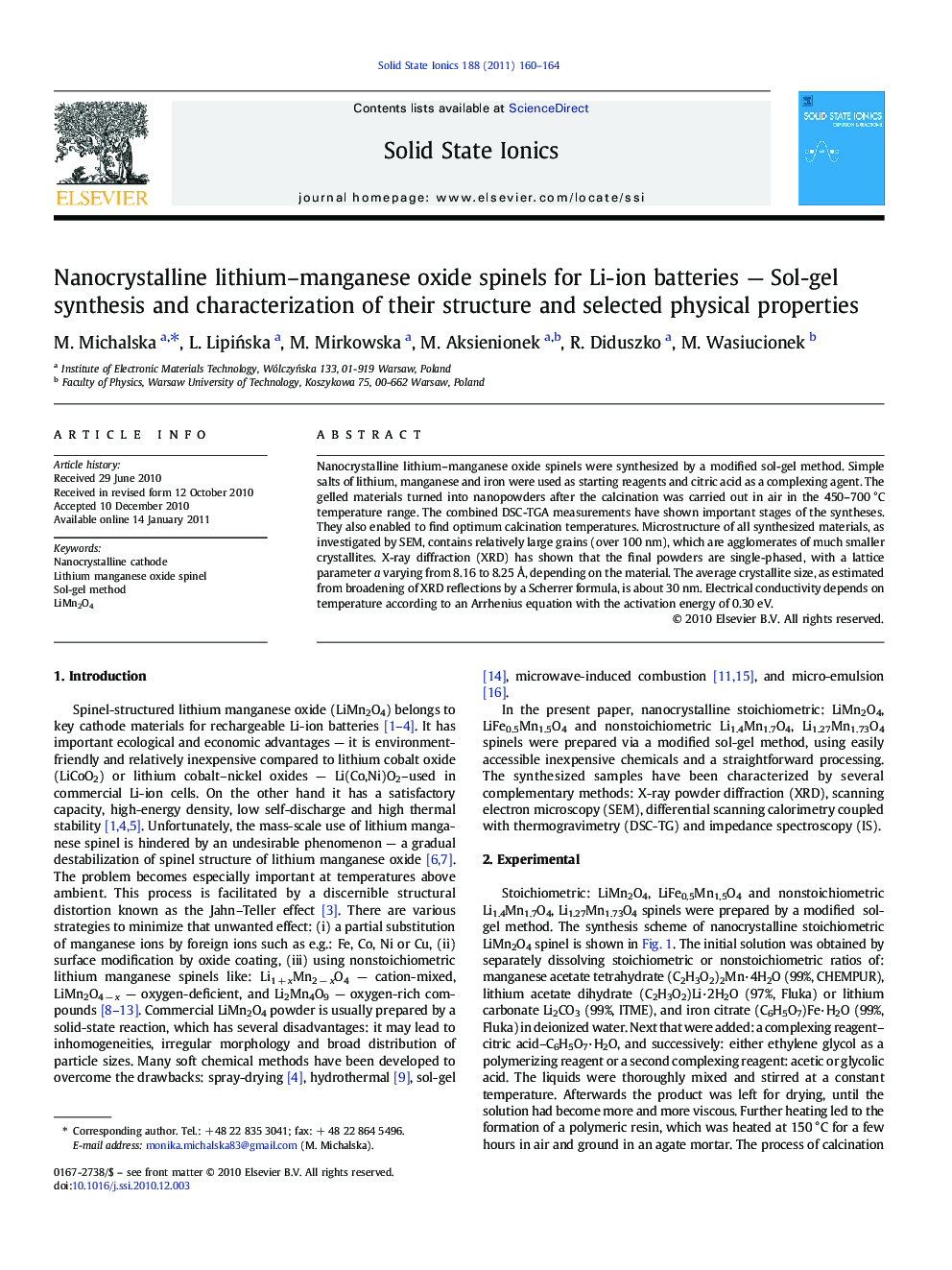| کد مقاله | کد نشریه | سال انتشار | مقاله انگلیسی | نسخه تمام متن |
|---|---|---|---|---|
| 1297600 | 973866 | 2011 | 5 صفحه PDF | دانلود رایگان |

Nanocrystalline lithium–manganese oxide spinels were synthesized by a modified sol-gel method. Simple salts of lithium, manganese and iron were used as starting reagents and citric acid as a complexing agent. The gelled materials turned into nanopowders after the calcination was carried out in air in the 450–700 °C temperature range. The combined DSC-TGA measurements have shown important stages of the syntheses. They also enabled to find optimum calcination temperatures. Microstructure of all synthesized materials, as investigated by SEM, contains relatively large grains (over 100 nm), which are agglomerates of much smaller crystallites. X-ray diffraction (XRD) has shown that the final powders are single-phased, with a lattice parameter a varying from 8.16 to 8.25 Å, depending on the material. The average crystallite size, as estimated from broadening of XRD reflections by a Scherrer formula, is about 30 nm. Electrical conductivity depends on temperature according to an Arrhenius equation with the activation energy of 0.30 eV.
Research highlights
► Stoichiometric spinels: LiMn2O4, LiFe0.5Mn1.5O4 and nonstoichiometric: Li1.4Mn1.7O4, Li1.27Mn1.73O4 spinels were prepared by a modified sol-gel method.
► Microstructure of the materials (SEM) contains relatively large grains being agglomerates of much smaller crystallites.
► XRD has shown that the final powders are single-phased.
► Electrical conductivity depends on temperature according to an Arrhenius equation.
Journal: Solid State Ionics - Volume 188, Issue 1, 22 April 2011, Pages 160–164